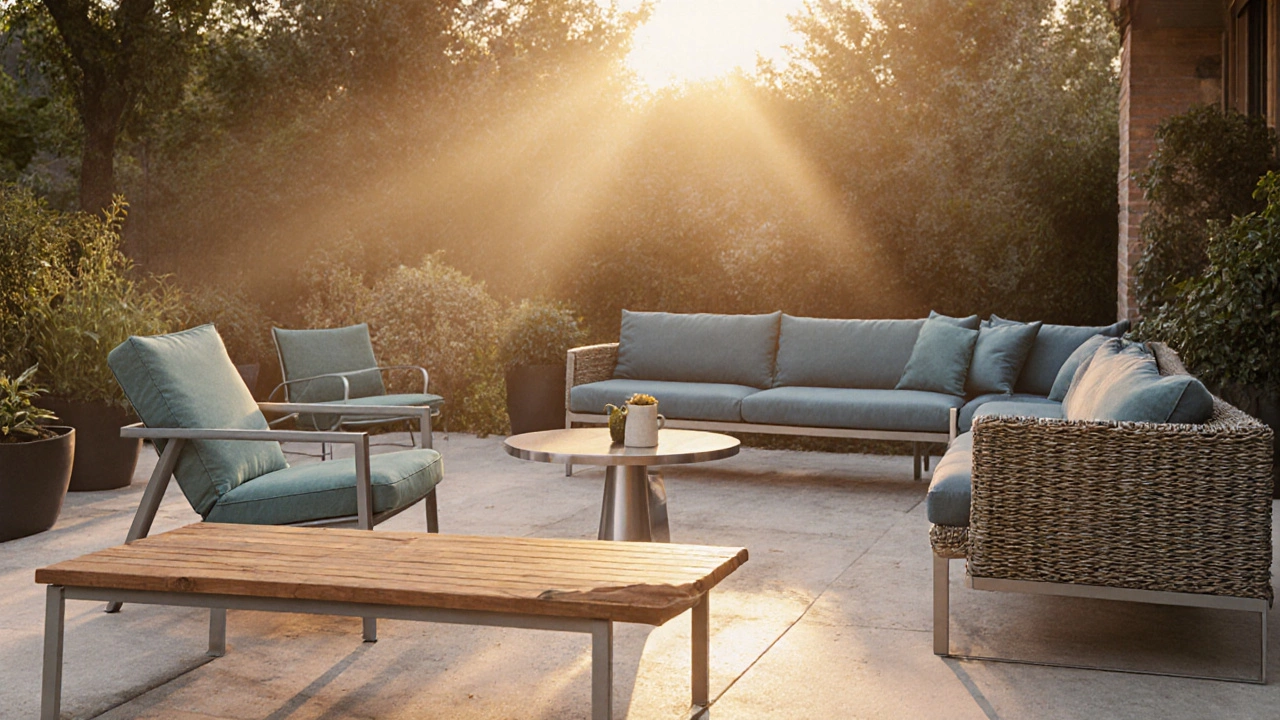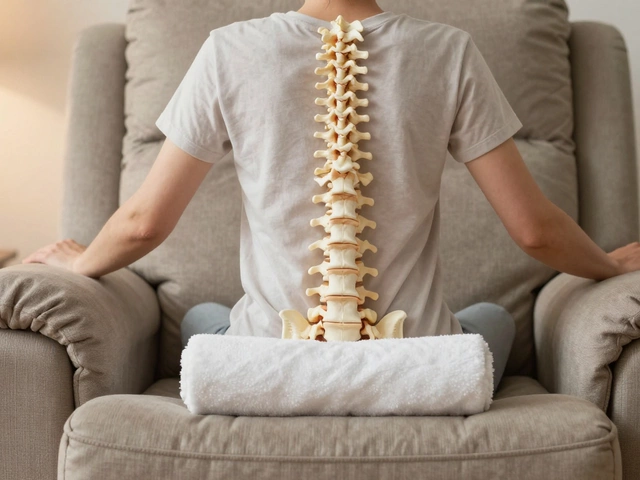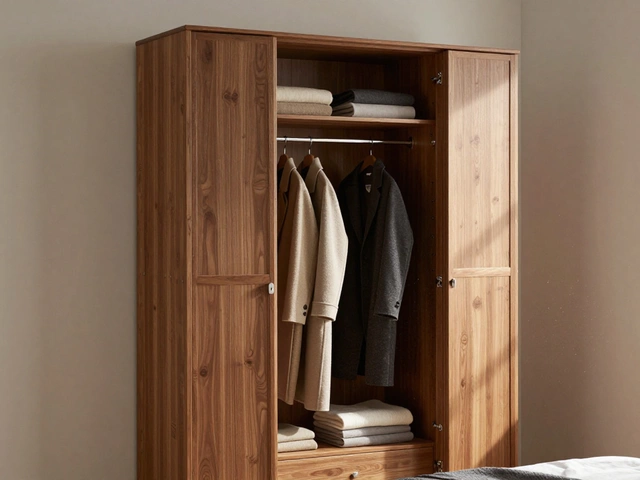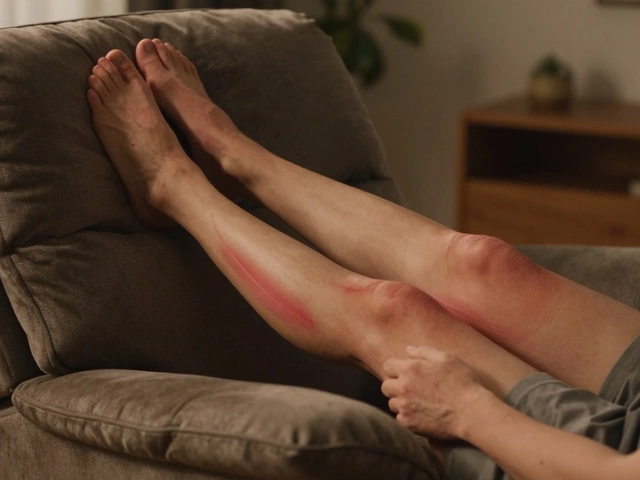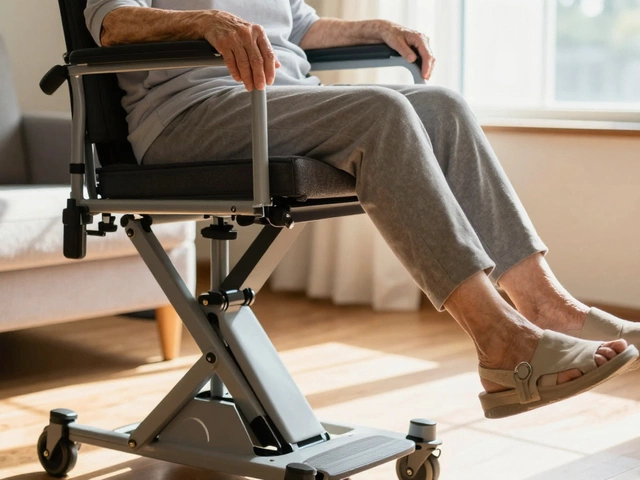Outdoor Furniture Material Selector
Find Your Perfect Material
Select your climate conditions and maintenance preference to get personalized recommendations.
When you’re hunting for the hardest wearing outdoor furniture, you want pieces that shrug off rain, UV rays, and the occasional snow‑shove. In the Greater Toronto Area, where Mississauga’s winters can be brutal and summers scorch, choosing the right material can save you a ton of money and hassle. Below we break down which materials truly stand the test of time, what you’ll need to care for them, and how to pick the perfect set for your patio or garden.
What does “hardest wearing” really mean?
Durability isn’t just about a single test - it’s a mix of resistance to moisture, temperature swings, UV degradation, and mechanical wear. A piece that looks pristine after five years in a mild climate might crack in a place with harsh freeze‑thaw cycles. So we measure hardness by three practical factors:
- Weather resistance: How well the material copes with rain, snow, heat, and sunlight.
- Structural integrity: Ability to bear weight and resist warping, rust, or rot.
- Maintenance demand: How much upkeep is needed to keep it looking good.
Understanding these helps you match a material to the climate you live in.
Top five hardest‑wearing outdoor furniture materials
Below are the five materials that consistently rank highest across durability tests and real‑world reviews.
Teak is a tropical hardwood that naturally contains oils protecting it from moisture and UV rays. When left outdoors, teak develops a silver‑gray patina that many find attractive. Its density and natural oils give it a lifespan of 20‑30 years with minimal care.
Pros: Extremely sturdy, beautiful aging, resistant to insects.
Cons: Premium price, heavy, may need occasional oiling for a lighter tone.
Aluminum frames are lightweight yet strong. Anodized or powder‑coated finishes add a protective barrier against rust.
Pros: Rust‑proof, easy to move, affordable.
Cons: Can feel less “solid” than steel, may dent under heavy impact.
Stainless steel offers the ultimate corrosion resistance, especially grades 304 and 316. These alloys form a passive chromium oxide layer that prevents rust even in salty air.
Pros: Super strong, sleek look, virtually rust‑free.
Cons: Higher cost, heavier than aluminum.
Synthetic rattan, also called resin wicker, is woven from high‑density polyethylene (HDPE) fibers. It mimics the look of natural rattan while resisting rot, fading, and mildew.
Pros: Comfortable, classic aesthetic, easy to clean.
Cons: Frame material varies; lower‑end sets may use thin steel that can rust.
HDPE (high‑density polyethylene) is a plastic often used for all‑plastic furniture sets. It’s UV‑stabilized, non‑porous, and can endure extreme temperature changes.
Pros: Very low maintenance, lightweight, affordable.
Cons: Can look bulkier, may fade slightly over many years.
Side‑by‑side comparison
| Material | Durability Rating (1‑5) |
Maintenance Level (Low/Medium/High) |
Typical Cost (USD) | Weather Resistance | Weight |
|---|---|---|---|---|---|
| Teak | 5 | Medium (optional oil) | $150‑$250 per seat | Excellent (natural oils) | Heavy |
| Aluminum | 4 | Low | $80‑$180 per seat | Very Good (powder‑coat) | Light |
| Stainless Steel | 5 | Low | $200‑$350 per seat | Excellent (304/316) | Medium‑Heavy |
| Synthetic Rattan | 4 | Low | $120‑$250 per seat | Good (UV‑treated) | Medium |
| HDPE | 4 | Low | $70‑$150 per seat | Very Good (UV‑stabilized) | Light |
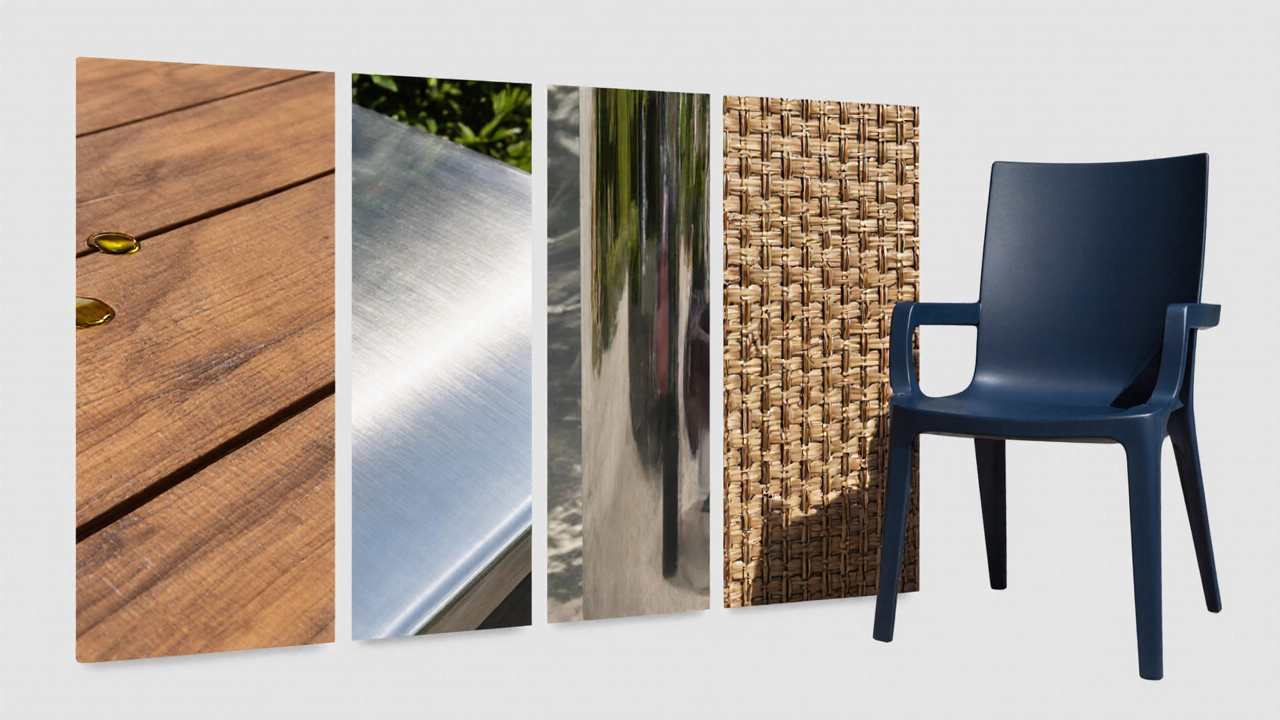
Maintenance tips to keep furniture looking fresh
Even the toughest materials benefit from a little TLC. Here are quick habits that extend life:
- UV‑resistant finish - Apply a protective spray to aluminum or stainless steel every 2‑3 years to maintain shine.
- Cover furniture with breathable outdoor covers during winter or heavy rain.
- Clean with mild soap and water; avoid pressure washers on teak to prevent surface damage.
- Use a marine‑grade polymer oil for teak if you prefer a warm tone rather than the gray patina.
- Store cushions in a dry area; rotate them weekly to avoid uneven fading.
Brands and models that deliver on durability
Not all furniture labeled “teak” or “aluminum” lives up to standards. Below are reputable brands that consistently use high‑grade materials:
- Frontgate - Their teak sets are sourced from sustainably managed forests and come with a 10‑year warranty.
- Trex Outdoor - Known for HDPE resin wicker that meets ISO‑9001 quality controls.
- Brown Jordan - Offers powder‑coated aluminum frames and premium cushions designed for Canadian climates.
- Herman Miller Outdoor - Premium stainless‑steel lines with hidden fasteners for a sleek look.
- Polywood - All‑plastic tables made from reclaimed HDPE, virtually recyclable and UV‑stable.
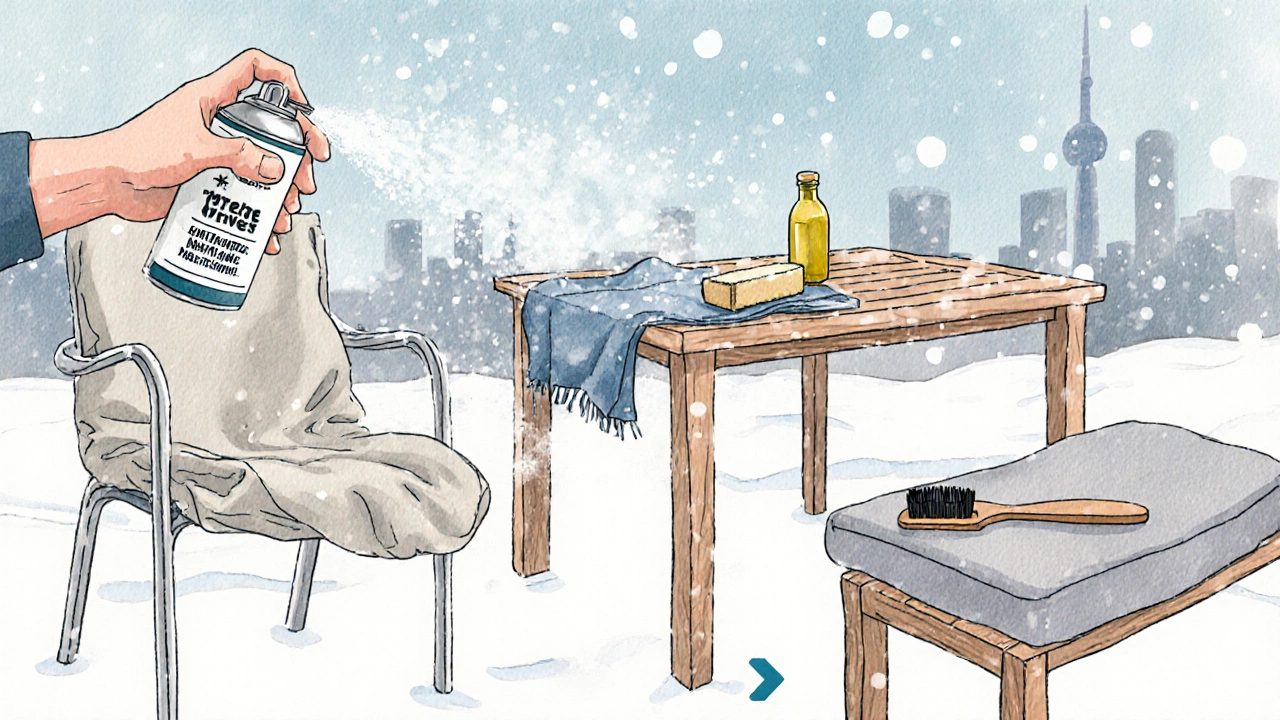
Buying checklist - what to verify before you click ‘add to cart’
- Confirm the exact material grade (e.g., 304 vs. 316 stainless steel, powder‑coat vs. raw aluminum).
- Check warranty length; a minimum of 5 years indicates confidence in durability.
- Look for UV‑stabilized finishes or built‑in protective coatings.
- Measure weight and consider if you’ll need a dolly for moving heavy teak pieces.
- Read customer reviews focusing on longevity in climates similar to Mississauga’s.
Frequently Asked Questions
Which outdoor furniture material lasts the longest?
Teak and stainless steel both top the list, often reaching 20‑30 years with proper care. In harsh coastal areas, stainless steel’s corrosion resistance can edge out teak.
Is synthetic rattan really weather‑proof?
High‑quality synthetic rattan made from HDPE fibers resists rot, mildew, and UV fading. However, check that the underlying frame is aluminum or stainless steel; cheap steel frames will rust.
Can I leave aluminum furniture out in the snow?
Yes, as long as it has a powder‑coat or anodized finish. Remove cushions and covers to prevent moisture buildup, and rinse off any road salt after a storm.
Do I need to oil teak furniture?
Oiling is optional. Untreated teak will develop a silver‑gray patina that many love. If you prefer the original golden color, apply a marine‑grade teak oil once a year.
How much should I expect to pay for a durable patio set?
A high‑end set of four chairs plus a coffee table can range from $800 for HDPE‑based pieces to $3,000‑$4,500 for premium teak or stainless‑steel constructions. Think of it as a long‑term investment.
Choosing the hardest‑wearing outdoor furniture boils down to matching material strengths with your local climate and how much upkeep you’re willing to do. Armed with the comparison, maintenance tips, and buying checklist above, you can pick pieces that will stay comfortable and stylish for years to come.

